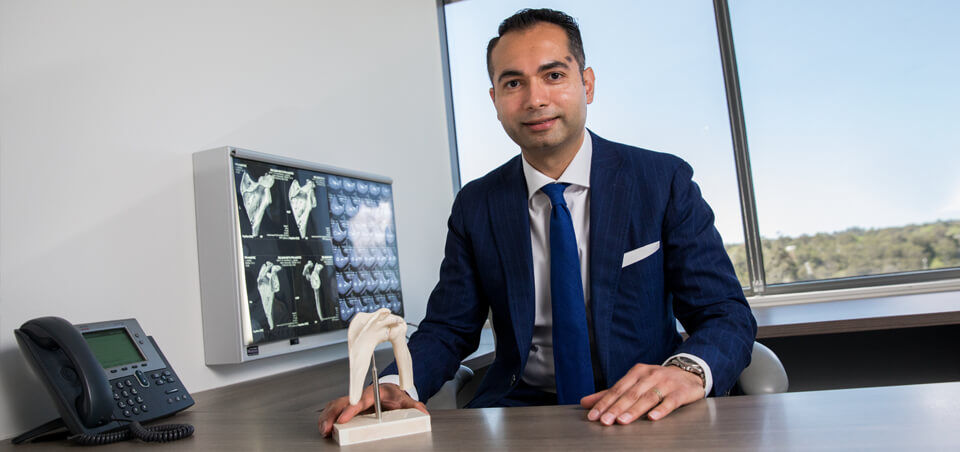Calcific Tendinopathy
Knowledge that empowers
What is it?
Calcific tendinopathy is a term used to describe calcific deposits within the rotator cuff tendons (a group of tendons that support the shoulder joint).
The calcifications form in the tendons over a period of time and, in many people, do not cause any symptoms. For reasons we don’t fully understand, the calcium can become painful in some people and the calcium deposits begin to ‘resorb’ which can cause a sudden increase in pain for no apparent reason. There is evidence to suggest that it can increase the pressure within the tendon, as well as causing a local chemical irritation. This leads to pain which can be extremely intense. It can be one of the most painful conditions of the shoulder.
The supraspinatus tendon is affected in the majority of cases, although it can occur within the other tendons.
It has commonly three phases:
- Formative
- Resting
- Resorptive: clinically the most painful
It does eventually disappear spontaneously, but this can take between 5 to 10 years to resolve.

Who is affected?
Calcium in tendons can be associated with smoking, tendon ‘wear and tear’, type 1 diabetes or can be due to genetic factors.
Some people won’t even know they have calcium in their tendons as it can remain ‘quiet’ (asymptomatic) for long periods of time.
A resorptive episode of calcific tendinopathy, which leads to inflammation and pain, commonly occurs between the ages of 30 and 60 years of age and it is more common in women than men. A resorptive episode, where pain increases suddenly over 24-48 hours, can occur for no apparent reason, or following mild trauma or strain.
What are the symptoms?
A painful (‘resorptive’) episode of calcific tendinopathy often presents without reason or after a seemingly simple injury or knock to the shoulder.
The pain often starts quickly, becoming very painful within 24-48 hours and is felt in the upper part of the arm. The pain in the resorptive phase can be severe and is often worse at night. Shoulder pain is felt as a result of the calcification applying pressure or irritating the surrounding tissues creating a significant inflammatory response.
How is the diagnosis made?
A physical examination will help exclude other common causes of shoulder pain. An X-ray and or ultrasound scan will help identify the calcification location, size and it’s type (some types of calcification respond better to some treatments than others).
What is the prognosis?
Once the calcific tendinitis becomes painful (resorptive phase), the calcium starts to fragment and reduce in size. Eventually it completely disappear in most people. Many patients make a full recovery over a period of 12-18 months, sometimes less. It is uncommon for it to recur once it has resolved.
However, because it is a degenerative process of the tendon, it may lead to tendon tears in the future. In a small proportion of cases, surgery may be needed for persistent irritation from calcific deposits. The treatment options for calcific tendinopathy are described below.
Non surgical treatment
In most cases, calcific tendinopathy is managed successfully with non-surgical treatment. Treatment options to help manage pain and reduce the size of the calcium include:
Medication.
You may be prescribed anti-inflammatory medications to help manage the pain. Sometimes the pain settles on its own and medication can help during this time.
Ultrasound guided fenestration, irrigation and aspiration.
The calcific deposit is identified using ultrasound machine. It is then fenestrated with the needle and sometimes soft calcium can be extracted and aspirated from the tendon. If the calcium is hard this may not be possible. An alternative in this case is to use the needle to peck the calcification to encourage normal resorption. Then under ultrasound guidance, local anaesthetic and corticosteroid (anti-inflammatory) is injected into the inflamed subacromial bursa. The arm is rested for 10 days to two weeks before beginning to use your shoulder normally again – heavy lifting may need to be avoided for a couple of weeks.
Surgical treatment
Arthroscopic evacuation of calcific deposits.
If the pain related to the calcification does not improve with non-surgical treatment the calcium is sometimes removed via keyhole (arthroscopic) surgery.
If the removal of the calcium leaves a hole in the tendon, this is repaired simultaneously. You will need to rest the arm in a sling following the operation before getting it moving and rebuilding strength in your shoulder. You may require time away from work depending on the nature of your job.
